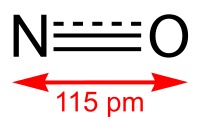
Photo from wikipedia
INTRODUCTION AND OBJECTIVE: Hydrogen sulfide (H2S) signaling has been proposed to participate in erectile physiology. L-cysteine (CYS)/H2S pathway stimulation causes cGMP-dependent relaxation of human corpus cavernosum (HCC) and penile arteries… Click to show full abstract
INTRODUCTION AND OBJECTIVE: Hydrogen sulfide (H2S) signaling has been proposed to participate in erectile physiology. L-cysteine (CYS)/H2S pathway stimulation causes cGMP-dependent relaxation of human corpus cavernosum (HCC) and penile arteries (HPRA). The aim of this work was to evaluate the impact of erectile dysfunction (ED) on CYS/H2S pathway at functional and molecular level in human penile vascular tissues. METHODS: NaHSand CYS-induced responses were evaluated in HCC and HPRA from organ donors without notice of ED (NoED, n[29) and from ED patients undergoing penile prosthesis insertion (n[45). cGMP accumulation and cystathionine b-synthase (CBS) and cystathionine g-lyase (CSE) expressions were also determined in these tissues. RESULTS: NaHS-induced relaxations were slightly but significantly impaired in HCC (pEC50 4.58 0.09 vs. 4.19 0.07, p<0.01) but not in HPRA (pEC50 4.16 0.10 vs. 4.00 0.07) from ED patients. In contrast, CYS-induced relaxations were markedly impaired in both HCC (Emax 67.6 4.9% vs 46.2 4.6%, p<0.01) and HPRA (Emax 80.8 4.0% vs 48.1 8.6%, p<0.05) from men with ED. Impairment of CYS-induced responses was observed even after separating diabetic ED patients. In HPRA from ED patients, CYSbut not NaHS-induced vasodilation was significantly associated to endothelial function measured as vasodilatory capacity of acetylcholine (ACh) in these preparations (pEC25 CYS vs. Emax ACh: r [0.481, p<0.01). Impairment of CYSinduced relaxations was related to significant reduction in CYSinduced accumulation of cGMP in cavernosal tissue. Furthermore, the expression of H2S synthesizing enzymes CBS and CSE, as determined by Western blot, was significantly reduced in HCC from ED patients with respect to NoED tissues. This diminished expression of CBS and CSE was clearly manifested in immunofluorescence assays in HCC and HPRA sections. CONCLUSIONS: ED involves impairment of CYS/H2S pathway in penile vascular tissues associated with decreased expression of H2S generating enzymes, CBS and CSE. These evidences support a therapeutic potential for modulation of CYS/H2S signaling in the management of ED.
Journal Title: Journal of Urology
Year Published: 2020
Link to full text (if available)
Share on Social Media: Sign Up to like & get
recommendations!